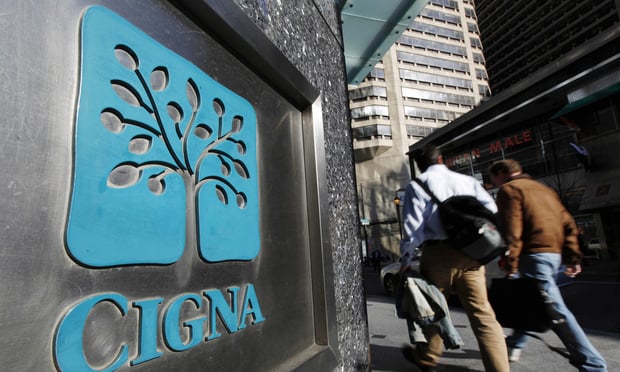 Given today'seconomy, many employers face tough decisions. While reducing theworkforce brings the largest savings to an employer's bottom line,most organizations see this as the least desirable outcome. Toprevent labor reductions, other cost-saving measurements are beingimplemented, and this often impacts an employer's benefitspackage.
Given today'seconomy, many employers face tough decisions. While reducing theworkforce brings the largest savings to an employer's bottom line,most organizations see this as the least desirable outcome. Toprevent labor reductions, other cost-saving measurements are beingimplemented, and this often impacts an employer's benefitspackage.
In fact, as the economy remains slow, 87 percent of employerssay today's financial climate has influenced their benefitsdecisions, and 73 percent of employers say they expect employees topay more toward their benefits in the coming year, according to the2012 Benefits Selling Employer Survey.
|Health insurance, of course, is still the most costly benefit;thus, 71 percent of respondents continue to take a harder look atless traditional options, such as consumer-driven health plans, tocut the financial burden.
|Before turning to CDHPs, many employers focused on trying to improve some of thetraditional elements of health care coverage, but it wasn't enoughto control costs adequately, says Maureen Fay, senior vicepresident of the health and benefits consulting practice at AonHewitt in Chicago. Employers remained on the hook for inflatinghealth care costs that reached record highs, but with CDHPs,much of the financial responsibility is lifted from the employerswhile still providing workable health care coverage.
|[Read "CDHPssurpass HMOs as second most common health plan"]
|“Employers have taken a lot of the historical approaches tomanage benefits costs, such as changing plan design elements,tweaking copays or deductibles, and adjusting employee contributionamounts, but what they've found is, given where the economy is andhow health care has been trending, those old traditional methods ofmanaging their costs just aren't cutting it anymore,” Fay says.“They need to do something different and more aggressive.”
|Much of what makes CDHPs so effective is its focus onconsumerism, Fay says. Because much of the cost is shifted to theemployees, the goal is to help them understand how to become betterconsumers. Often, employees remain unaware of the major costdifferences for similar services, but when they have more financialresponsibilities within the CDHP plans, they're more likely to takenotice of smarter consumer habits.
|“Employers are hoping that by providing employees with moreinsight in terms of what the actual cost of health care is, they'regoing to make smarter decisions and think twice about going to theemergency room versus an urgent care center or having an MRI at ahospital where that cost might be five times higher than if theywere to have it at an outpatient setting,” Fay says.
|Along with becoming better consumers, employers are implementingCDHPs to help employees take more responsibility for their health,Fay adds. Similar to consumerism, employees become more aware ofhow their health impacts their personal finances under CDHPs. Whenan employee has greater financial consequences because of poorhealth, they're more likely to practice healthy habits.
|[See "Fivethings a consumer looks for in an insurer"]
|“With CDHPs, employers are also trying to change member behaviorby trying to increase engagement and having them take ownership fortheir health,” Fay says. “Employers want employees to focus ontheir health risks and focus more on managing their health asopposed to just paying for expenses on the backend when they'resick.”
|Political factors
|Besides the economy, health care reform is also causing more employers to rethinktheir benefit offerings, according to 75.5 percent of respondents.Since health care reform passed, various provisions in the law havebeen implemented, which has caused a sense of uncertainty amongemployers, says Paul Ashley, advisor at FirstPerson BenefitAdvisors, an employee benefits firm in Indianapolis.
|“When it comes to benefits and health care reform, we were allwaiting to see what the Supreme Court would say, and we got claritythere,” Ashley says. “Now that we have the judicial clarity, whatis the November election cycle going to do in terms of health carereform and regulatory impact on employers and benefits? We knowmore than we knew before the Supreme Court'sdecision, but we don't know as much as we're going to know whenwe wake up the morning after the election.”
|The presidential election is also causing some small employersto reconsider whether they want to make additional hiringdecisions, Ashley says. Until the presidential election takesplace, the future of health care is still unknown, and smallemployers are unsure if that 50th employee would make a differencein how they handle their health care benefits. This also couldfurther the slow economy that is causing many employers to approachbenefits more cautiously.
|“Employers hesitating to hire could be having an impact, aswell,” Ashley says. “That becomes a self-fulfilling prophecy, so ifcompany owners are keeping money on the sideline, it furthers theslow economy.”
|With the economy being an issue, 58 percent of respondentsreport that they are turning to wellness and disease-managementprograms to contain costs. Fay even believes CDHPs are driving moreemployers to wellness programs because it all comes down to betterhealth for cutting costs.
|“Within the consumer-driven health plans, it gives employers agreat framework for wellness incentives where they can use thoseaccounts as vehicles to fund those incentives, which can be used tohelp drive people to engage in some of those appropriate behaviors.Both consumer-driven health plans and wellness programs are helpingemployers contain costs,” Fay says.
|A biometric screening is often the first step in a wellness program, Fay says. Once the biometric screening testresults are available, an employee then can see what areas call forimprovement. To reach wellness goals, many employers bring incoaches who can help employees lead healthier lifestyles or hostfitness competitions that encourage better habits.
|“Wellness programs are showing employees the areas of concernthey should focus on to either improve or maintain their health moving forward,” Fay says. “Beyond that,more employers are rewarding employees for establishinghealth-improvement goals and then making progress toward thosegoals.”
||Financial wellness?
|Along with traditional wellness plans that focus onhealth-related issues, Ashley is seeing more employers turn tofinancial wellness plans. In many cases, employers are finding thestress of employees' uncertain financial lifestyles is leading tosome of the same adverse consequences that come with poorhealth.
|“Employees are so stressed out financially that if an employeris going to invest dollars in overall wellness—the whole personwellness—it is going to focus on financial wellness becauseemployees first have to reach a stable place financially,” Ashleysays. “They need the tools and resources to become financiallysecure, so they don't have the stress in their lives and canconcentrate on other wellness issues that lead to positiveproductivity, such as good nutrition and working out.”
|Measuring a wellness program's return on investment can bedifficult, but it's an important step if an employer wants to getthe most out of a program, Ashley adds. To determine return oninvestment, an employer can compare health plan costs from when thewellness plan was implemented, measure absenteeism rates andexamine productivity levels. Typically, it takes two to four yearsbefore an employer can realize the wellness program's truesavings.
|“It isn't a flash in the pan,” Ashley says. “We don't pay forwellness, and then, all of a sudden, our rates go down six monthslater. That simply doesn't happen, but if an employer can have amultiyear look at the ROI, it's an investment over time.”
|Retirement funds also remain an important benefit as 72 ofrespondents offer retirement benefits, and although the recessionhas been difficult for many companies, only 36 percent ofrespondents have reduced their matching incentives fordefined-contribution plans since the economicdownturn.
|Many employers are avoiding cutting back on matching incentives in an effort to encourage employee participation,says Robyn Credico, defined contribution practice leader at TowersWatson, a global professional services company in New York City. Asemployees continue to delay retirement, they need more helpingbecoming financially secure, and offering retirement matching is arelatively low-cost method of doing so.
|Still, even though most respondents did not reduce retirementmatching, the economy could be impacting this offering. Of therespondents that cut retirement matching, only 28 percent have beenin the position to reinstate the benefit. Many employers may haveavoided reducing retirement matching, but the majority of thosethat had to eliminate it are not ready to support retirement plansin the way they once did.
|Brokers crucial
|In regard to the broker role, the survey finds that it continuesto play an important part of the benefits process as mostrespondents (81 percent) rely on brokers. Of those, 87 percent usebrokers who are commission based, and 13 percent use brokers whoare fee based.
|When it comes to enrollment, respondents are split on how theirbrokers participate. For 40 percent of respondents, brokers conductthe benefits enrollment process, and 39 percent of respondents saytheir brokers at least help conduct the enrollment process. Only 21percent of respondents say their brokers do not participate inenrollment.
|Moving forward, Ashley expects to see the broker role evolveinto one that focuses more on consulting. While most employers, at51 percent, plan on spending the same amount of time on benefits asthe previous year, another 42 percent say they anticipate spendingmore time on benefits in 2012. Considering the complicatedenvironment of health care reform and the financial stakes that areinvolved, employers are looking for brokers who can offer more thana product sales pitch. Rather, employers need their brokers to actas partners in developing strategic solutions, implementing benefitdesigns and measuring analytics.
|“If you were to drill down deeper in that 81 percent data ofthose relying on brokers, you might find a lot of these people areworking with consultants and not traditional brokers because,fortunately or unfortunately, the day and age of traditionalinsurance product broker is probably going to go away and what'sgoing to emerge are multidisciplinary firms who can deliver valueto their clients,” Ashley says. “It's not just about the product;it's about strategy.”
Complete your profile to continue reading and get FREE access to BenefitsPRO, part of your ALM digital membership.
Your access to unlimited BenefitsPRO content isn’t changing.
Once you are an ALM digital member, you’ll receive:
- Critical BenefitsPRO information including cutting edge post-reform success strategies, access to educational webcasts and videos, resources from industry leaders, and informative Newsletters.
- Exclusive discounts on ALM, BenefitsPRO magazine and BenefitsPRO.com events
- Access to other award-winning ALM websites including ThinkAdvisor.com and Law.com
Already have an account? Sign In
© 2024 ALM Global, LLC, All Rights Reserved. Request academic re-use from www.copyright.com. All other uses, submit a request to [email protected]. For more information visit Asset & Logo Licensing.








